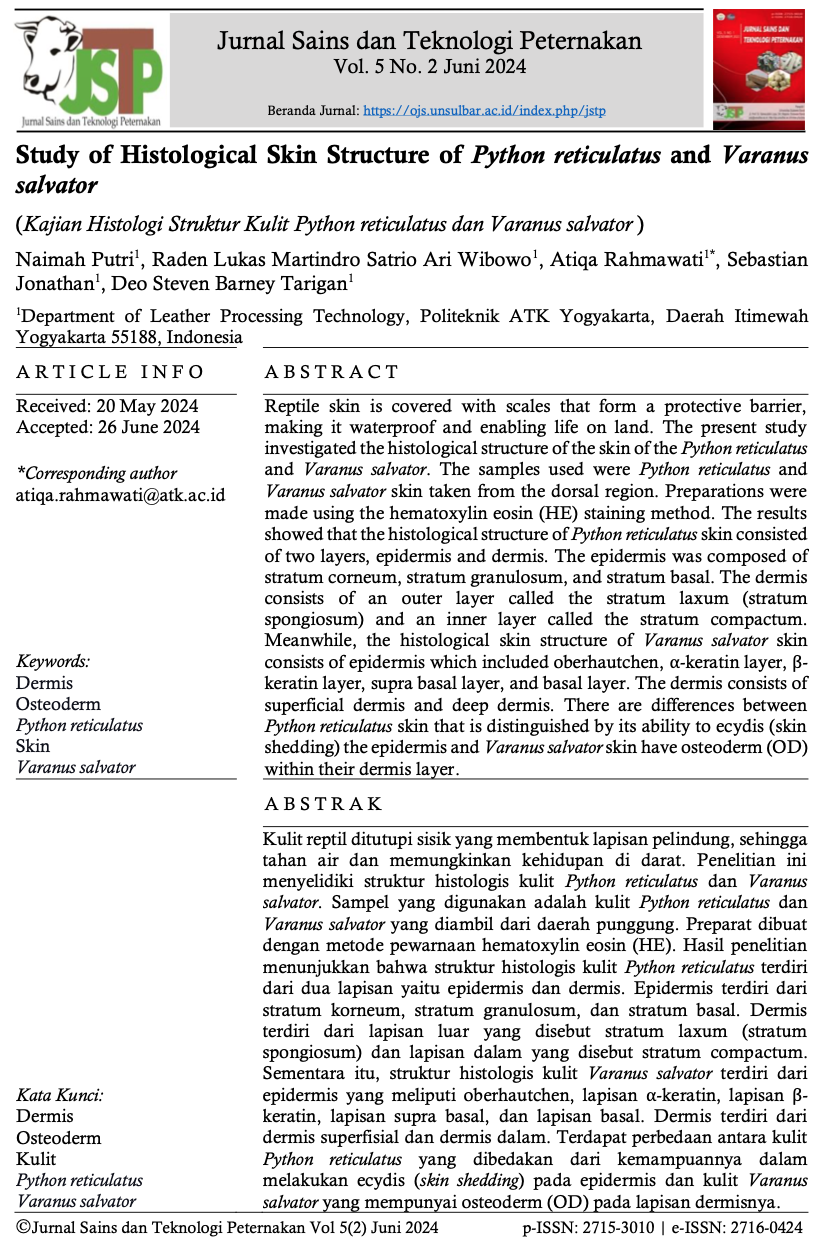Main Article Content
Abstract
Reptile skin is covered with scales that form a protective barrier, making it waterproof and enabling life on land. The present study investigated the histological structure of the skin of the Python reticulatus and Varanus salvator. The samples used were Python reticulatus and Varanus salvator skin taken from the dorsal region. Preparations were made using the hematoxylin eosin (HE) staining method which was carried out at the Microbiology of the leather processing technology, Politeknik ATK Yogyakarta. The results showed that the histological structure of Python reticulatus skin consisted of two layers, epidermis and dermis. The epidermis was composed of stratum corneum, stratum granulosum, and stratum basale. The dermis consists of an outer layer called the stratum laxum (stratum spongiosum) and an inner layer called the stratum compactum. Meanwhile, the histological skin structure of Varanus salvator skin consists of epidermis which included oberhautchen, α-keratin layer, β-keratin layer, supra basale layer, and basale layer. The dermis consists of superficial dermis and deep dermis. There are differences between Python reticulatus skin that is distinguished by its ability to ecydis (skin shedding) the epidermis and Varanus salvator skin have osteoderm (OD) within their dermis layer
Keywords
Article Details

This work is licensed under a Creative Commons Attribution-ShareAlike 4.0 International License.
Authors submitting manuscripts should understand and agree that the copyright of manuscripts of the article shall be assigned/transferred to Jurnal Sains dan Teknologi Peternakan. Jurnal Sains dan Teknologi Peternakan operates under an article of this journal licensed under Creative Commons Attribution-ShareAlike 4.0 International License. Authors and Readers can copy and redistribute the material in any medium or format, as well as remix, transform, and build upon the material for any purpose, but they must give appropriate credit (cite to the article or content), provide a link to the license, and indicate if changes were made. If you remix, transform or build upon the material, you must distribute your contributions under the same license as the original.
